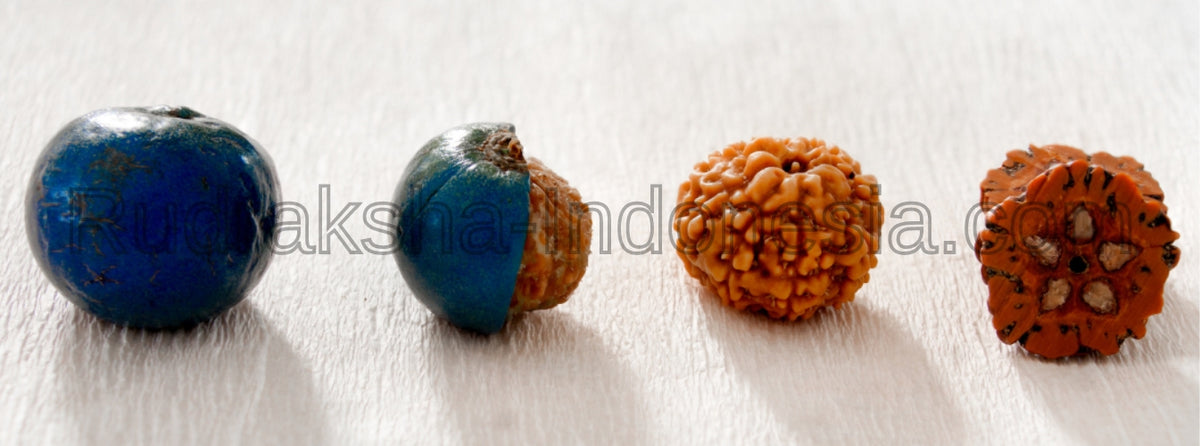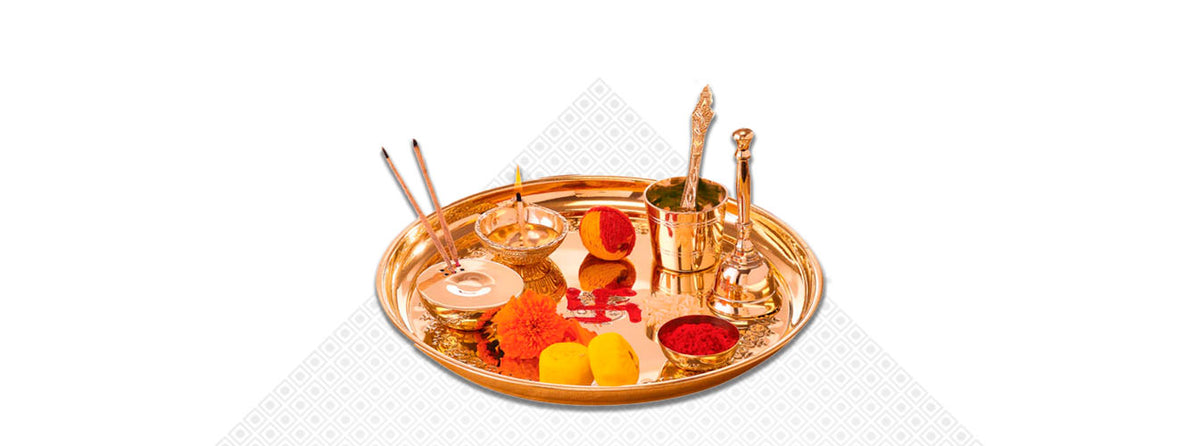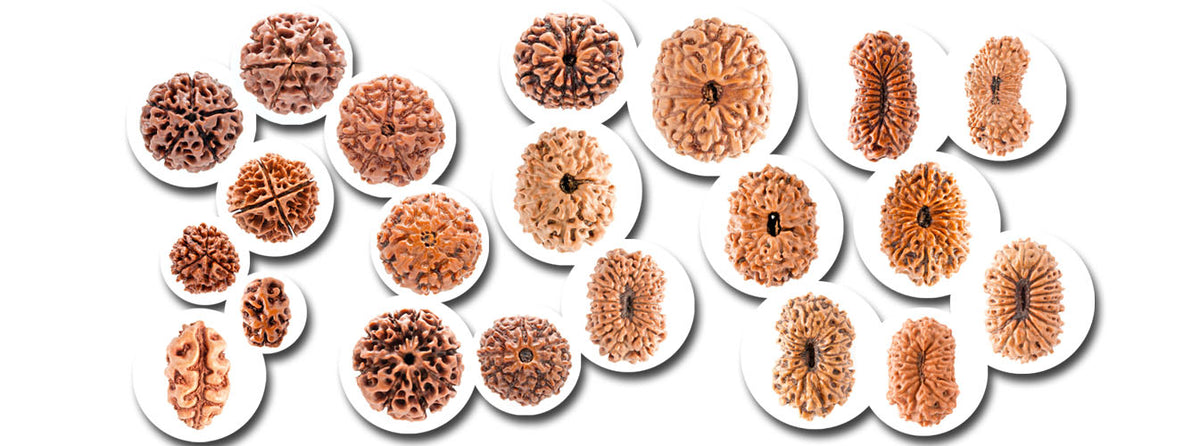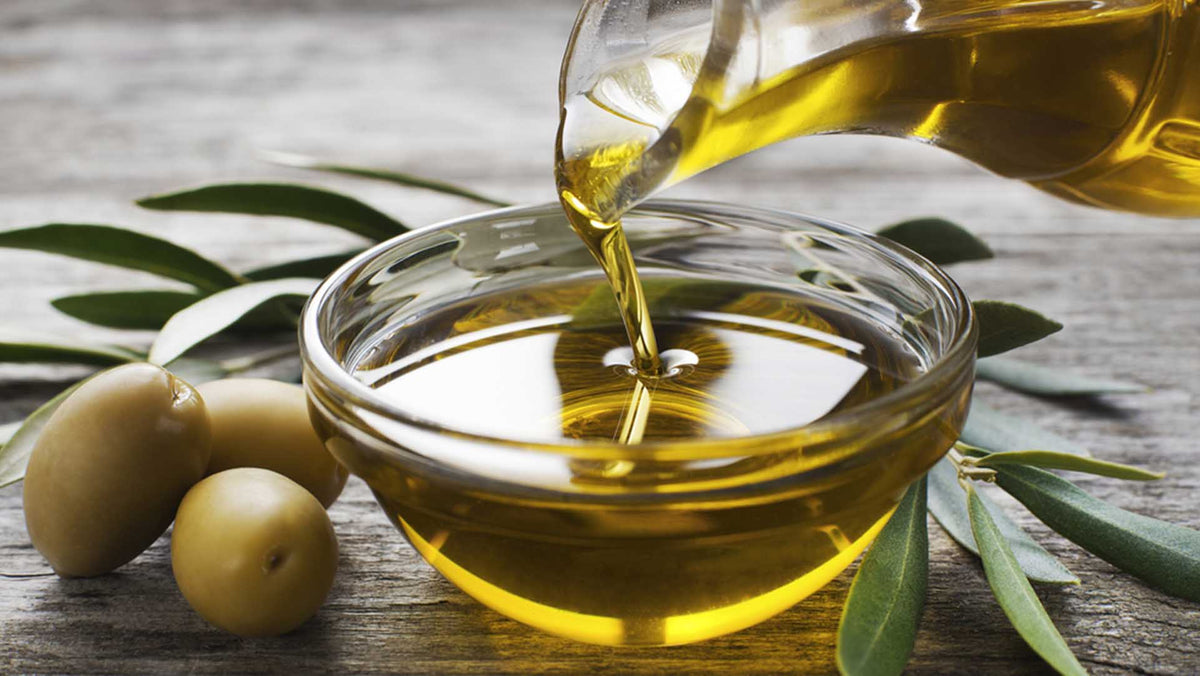Rudraksha
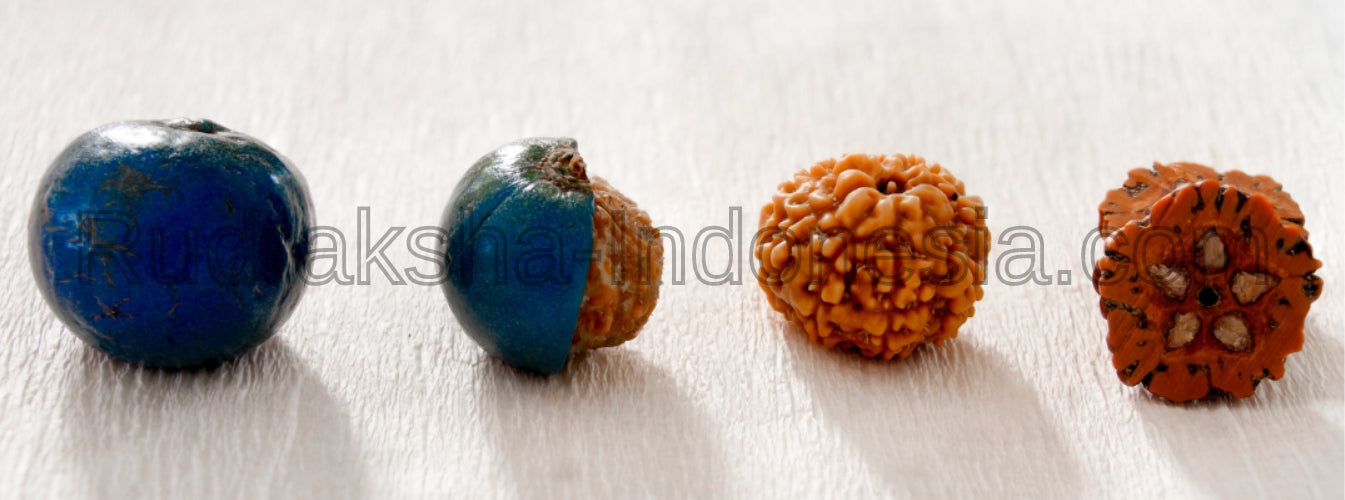
Due to its magical qualities, rudraksha has captured the attention of people all over the world. It is incredible how a seed from a fruit that grows on trees has gained so much attention and sparked curiosity throughout the globe.
In addition to Hindu religious saints, its users and followers also include artisans, housewives, academics, and businesspeople. The popularity of rudraksha has spread beyond traditional cultural and religious borders.
Its origins can be traced back to Lord Shiva, one of the Hindu religion's Trinities. Shiva's portraits and idols have been depicted wearing these rudraksha beads from ancient times.
A lot of mystery surround rudraksha, which is not uncommon for such rare and naturally occurring goods. There is mysticism surrounding gemstones, Tibetan Dzi Beads, and other comparable things.
Rudraksha Beads
Rudraksha Beads is primarily a sign of spirituality. It is worn singly or in groups as malas (rosary). Sadhus who wear them feel they have achieved extraordinary powers, and it is almost like a trademark for believers of God. Many individuals wear rudraksha for its good omen, as a talisman, or simply for good health. Others wear it as an accessory, unaware of its benefits.
During the British occupation of India, gold jewellery encrusted with rudraksha were shipped to England, where they were claimed to be favorites of British women, including members of the royal family.
Rudraksha hasn't gotten much attention or scientific acceptance as having healing or magical powers. This is not surprising, because many things that are important to the culture and traditions of one religion (Hinduism in this case) become a matter of faith or even superstition. Another reason could be that people have different ideas about the benefits of using rudraksha and how well it works.
There has been no study or organized studies on this bead to analyze its medical or healing powers, as well as its para-psychic or miraculous effects. Although these trees are found all over the world as Elaeocarpus species, their spiritual importance is solely of interest to people who believe in their divine elements. Because the rudraksha bead are more associated with Hindu religious symbols, they did not spark the interest of the Western business world.
Rudraksha bead is associated with Lord Shiva, the greatest of Hindu Gods, according to Hindu scriptures. Mahadev is his name, and it is said that rudraksha trees sprung from his tears. Rudra means Lord Shiva in Sanskrit, while aksha denotes tears or eyes. Many people believe, and scripture state, that the blessings of Lord Shiva should be sought to get the most benefit from these rudraksha bead.
According to the wearer experience, the most significant quality of these beads is that they make a person fearless. This primary attribute of rudraksha is provided by Shakti (Goddess of Power) and Lord Shiva. Every attribute of such holy items is difficult to explain rationally.
Since Lord Shiva is regarded as the creator of rudraksha, it has come to be seen as a sign of spirituality, fearlessness, and a source of strength for health, peace, and wealth. In India, rudraksha is found in almost every Hindu, Jain, and Sikh home, either as single rudraksha beads or as a rosary. Unfortunately, even after possessing these rudraksha beads for centuries, few people seem to realize their authenticity, actual value, or how they should be used, in what quantities, and how to keep them in good condition.
Rudraksha Benefits
Rudraksha has long been associated with spirituality, health, and prosperity, as well as the resolution of psychological disorders, fear, and emotional problems. The puranas explain its effectiveness. In fact, the Shiva Puran, Shrimad Devibhagwat, and other texts make several mention to these rudraksha beads. When one wears rudraksha, all sins and negative deeds such as cheating are forgiven, and the sinner acquires purity of thought and deed. The main functions of these beads is to suppress fear.
Lord Shiva is said to have asked himself and Lord Brahma, "Why do we keep making and destroying the human race, which suffers forever?" when he saw the pain that people had been going through for generations and generations. As He looked for an answer, tears started to fall from His third eyes, and it is said that where these tears fell, rudraksha trees grew. The point of this story is to show that rudraksha beads have a purpose, the message communicated by this narrative is that the rudraksha beads have a function, which is to care for mankind's miseries.
Many people have found that wearing a rudraksha brings about improvements in their health, happiness, and calmness, as well as financial success.
But the focus of hindu scripture wearing rudraksha helps being freed from sins and karmas by practicing meditation, it is important to clear one's mind of all thoughts, including those of the past, the present, and the future. It has been discovered that rudraksha is an appropriate instrument for this purpose because of its well-known ability to cleanse one's thoughts and to prepare a person to go on a spiritual path.
Rudraksha Tree
Rudraksha is a genus of huge evergreen trees with over 360 species found throughout the world's tropical and subtropical areas. The scientific classification of Elaeocarpaceae, which includes rudraskha, is as follows:
-
Kingdom: Plantae
-
Division: Magnoliophyta
-
Class: Mangoliopsida
-
Order: Oxalidales
-
Family: Elaeocarpaceae
-
Genus: Elaeocarpus ganitrus
-
Type: E. serratus Linn, Eganitrus, Roxb, etc.
Madagascar, India, Sri Lanka, Nepal, Sikkim, Bhutan, Myanmar, Tibet, Thailand, Malaysia, Indonesia, northern regions of Australia, New Zealand, New Caledonia, Fiji, Philippines, Southern China, Japan, and Hawaii are home to these species. The species is widespread in the islands of Borneo and New Guinea.
Dr. William Roxburgh, Director of the Indian Botanical Garden in Kolkata, categorized the most common type of these trees found in Nepal in the late nineteenth century while researching the flora of India and Nepal. He is regarded as an expert in Elaeocarpus ganitrus Roxb. generally known as rudraksha, which meet the comprehensive conditions specified in our ancient Hindu sacred books. As of today, the rudraksha species are largely found in Nepal and Indonesia, as there has been no coordinated plantation activity in other regions.
Elaei means "wild olive" in Greek and carpus means "fruit," the seed of fruit from wild olive-like trees has been categorized as Elaeocarpus. It is known as rudraksha in Sanskrit, Hindi, and Marathi, rudrakshi in Kannada, aakkam in Tamil, rudraksha halu in Telugu, and rudrakya in Bengali.
These trees can grow to 14 up to 29 meters tall depending on the environment Nepal rudraksha trees can grow to be above 20 meters tall and have trunks up to 1 metre in diameter.
Its leaves are similar to mango tree leaves, measuring around 17 cm long and 2 cm to 4 cm wide. The leaves are light green at first, then deep green at maturity, then yellowish red before turning grey and dying. Throughout the year, the leaf cycle continues all throughout the tree.
The blossoms add to the tree's attractiveness and appear to have a gentle fragrance comparable to raat rani flowers. The flower bunch's length is shorter than the leaf's. Flowering occurs around mid-November. Fruits appear after nearly a month of flowering, but only when the tree is 3 to 4 years old.
Rudraksha Fruits
The fruit (seed) of the Elaeocarpus ganitrus Roxb is Rudraksha. When the outer epicarp and fleshy middle mesocarp are removed, the stony endocarp or bead can be seen. The fruit's outer peel has various medical properties, and the locals in the area where these trees grow traditionally use them by boiling them in water and drinking the water in cases of fever, cough, or cold. The leaves are anti - bacterial and can be used to treat wounds. They are also taken orally to treat headaches, migraines, and mental disorders, as well as epilepsy.
The bead has a very hard rough surface with unequal grooves and a long hole in the center where it is still linked to the stem. The bead contains seeds that get their nutrition from the center cavity. Vertical clefts remain related to this center hole. While each cleft has its own compartment with one internal seed, the joint of these clefts protrudes beyond the seed's body.
This joint is referred to as the mukhi or face and is visible from the outside. In the more common types, the fruits of the rudraksha tree are green in color and have a shape that is practically rounded. The more it ages, the more it gets blue, and ultimately a dark brown. The tree looks very stunning with all of those fruits that are such a deep blue and sometimes even a violet color all over it. It is commonly known as the "Blue Marble Tree."
The outer skin of a Rudraksha is difficult to remove. In order to remove the outer peel and thoroughly clean the rudraksha seeds, the farmers utilize a variety of techniques. For instance, in some preparations, the seeds are boiled in water and then left to ferment in order to make the skin more pliable. Despite the fact that this technique results in the rudraksha beads being a deeper color, it is often used.
The trees bear their fruits in the month of November, and after being harvested, cleaned, and prepared for sale, the new crop is sent to the markets around the beginning of January. There are several plant species that are capable of producing two harvests in a single year. The quality of the crop that is harvested in April is superior to the one that is harvested in November. This phenomena is limited to specific species and geographical places and does not apply to all plants.
Mukhi Rudraksha Or Face Rudraksha
A mukhi is the whole separating line that extends from the top of the seed to the bottom of the seed. In a two-mukhi rudraksha, three-mukhi rudraksha, four-mukhi rudraksha, five-mukhi rudraksha, and six-mukhi rudraksha, these dividing lines are often spaced more or less equally (there could be several exceptions). Although the mukhis in higher mukhis could have different spacing between them, the ones that appear the best are the ones that have a nearly even distribution of surface area. In most cases, the lines, also known as face, can be found on the elevated mountain part of the rudraksha body rather than on the ridges. When attempting to distinguish authentic rudraksha from imitations, it is extremely important that you keep this fact in mind.
This feature makes manipulating the rudraksha beads slightly more difficult by adding more lines. Dishonest persons examine the open space availability and shape before producing the extra line, making it harder for an ordinary client to recognize the bead. To make a higher mukhi bead, these individuals insert a whole chunk of rudraksha with many mukhis into another rudraksha with counter space. This is commonly done with 14 and higher mukhi rudraksha beads. An expert can detect the modification just by looking at such rudraksha.
Approximately 70% of all rudraksha beads found in nature are five mukhis, with the remaining 30% being lower mukhis (1, 2, 3, 4) or higher mukhis (7, 8, 9 and upwards). Rudraksha of 15, 16, 17, 18, 19, 20, and 21 mukhis and higher are extremely rare, with only a few pieces found in nature each year. Gaurishankar, trijuti, and savar are also uncommon varieties. As a result, buyers of such exceedingly rare kinds should take extreme caution when acquiring them.
It has been reported that the Indonesian variety of Rudraksha contains beads with higher mukhi up to 38 mukhis. These rudraksha beads are an extremely uncommon occurrence in the natural environment.
There are references to rudraksha beads with as many as 14 mukhis in a number of ancient epics, including the Shiva Puran, Padma Puran, Shrimad Devibhagwat, and Skand Puran. There is no mention of those exceeding 14 mukhis, which may be due to the extremely limited availability of rudraksha beads of that rarity. Even though they are not mentioned in these epics, certain rare rudrakshas, such as the Gaurishankar, have been immensely famous ever since ancient times. This is because saints and priests utilize them during meditation and religious rites. rudraksha beads with higher mukhi values have traditionally been popular with both royal and wealthy families.
Colour Of Rudraksha
Rudraksha seeds come in white, red, yellow, and black varieties that are native to Elaeocarpus ganitrus Roxb. This classification is entirely determined by the tree's nature, maturity, and location. There are difficulties in classifying rudraksha based on color because there are no color standards. Furthermore, the results of none of the scientific studies have been color-coded. It appears that any color rudraksha may produce similar results, and after four or five months of wearing, all varieties age and turn black or deep brown due to reaction with body oils and sweat. As a result, any categorization based on color is best avoided. Those who strongly believe in this type of classification, as mentioned in the epics, may continue to do so as long as it does not interfere with someone else's ideology. Wearing "white" rudraksha by Brahmins, "red" by Kshatriyas, "yellow" by Vaishyas, and "black" by Shudras has been suggested, but there is no widespread support for this for a variety of reasons.
Internal Structure Of Mukhi Rudraksha Beads.
To put it in the most basic terms possible, a bead with five mukhi will have five clefts, each of which will contain one internal seed; a bead with nine mukhi will have nine clefts and nine seeds; and so on. In any given rudraksha beads, the number of internal clefts should correspond to the number of mukhi. This is an effective way to determine whether or not a rudraksha beads has multiple faces or facets.
In terms of internal structure, Indonesia rudraksha beads shares the same properties as the Nepal type. The energy of rudraksha beads, as we know, comes from the inside seed. As a result, understanding this conclusion is critical.
